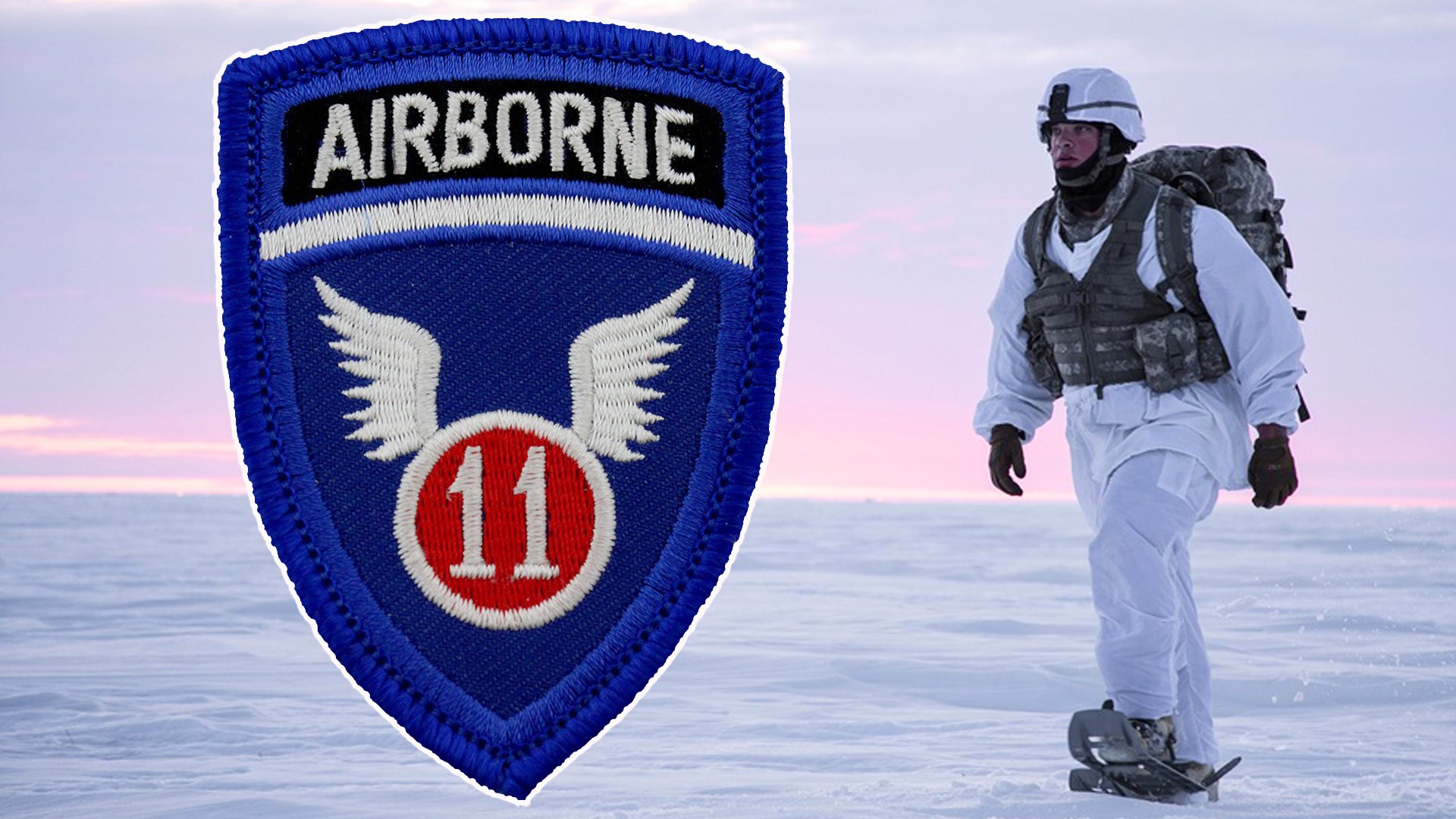
Soldiers in the 11th Airborne Division are prepared to fight and win in any frigid climate. National Guard photo by Sgt. Edward Eagerton. Composite by Coffee or Die.
During a ceremony on Jan. 12, Sgt. 1st Class Andrew Chapoton was awarded the Soldier’s Medal — the highest honor a soldier can receive for valor in a noncombat situation — for risking his life to save three injured motorists in a major highway crash.
On May 30 last year, Chapoton was just outside Seward, Alaska, beginning the two-hour drive back to Anchorage on the remote Seward Highway, when a vehicle swerved into his lane and smashed head-on into the car directly ahead of him. Chapoton rushed to the damaged vehicle and pulled three severely injured civilians to safety.
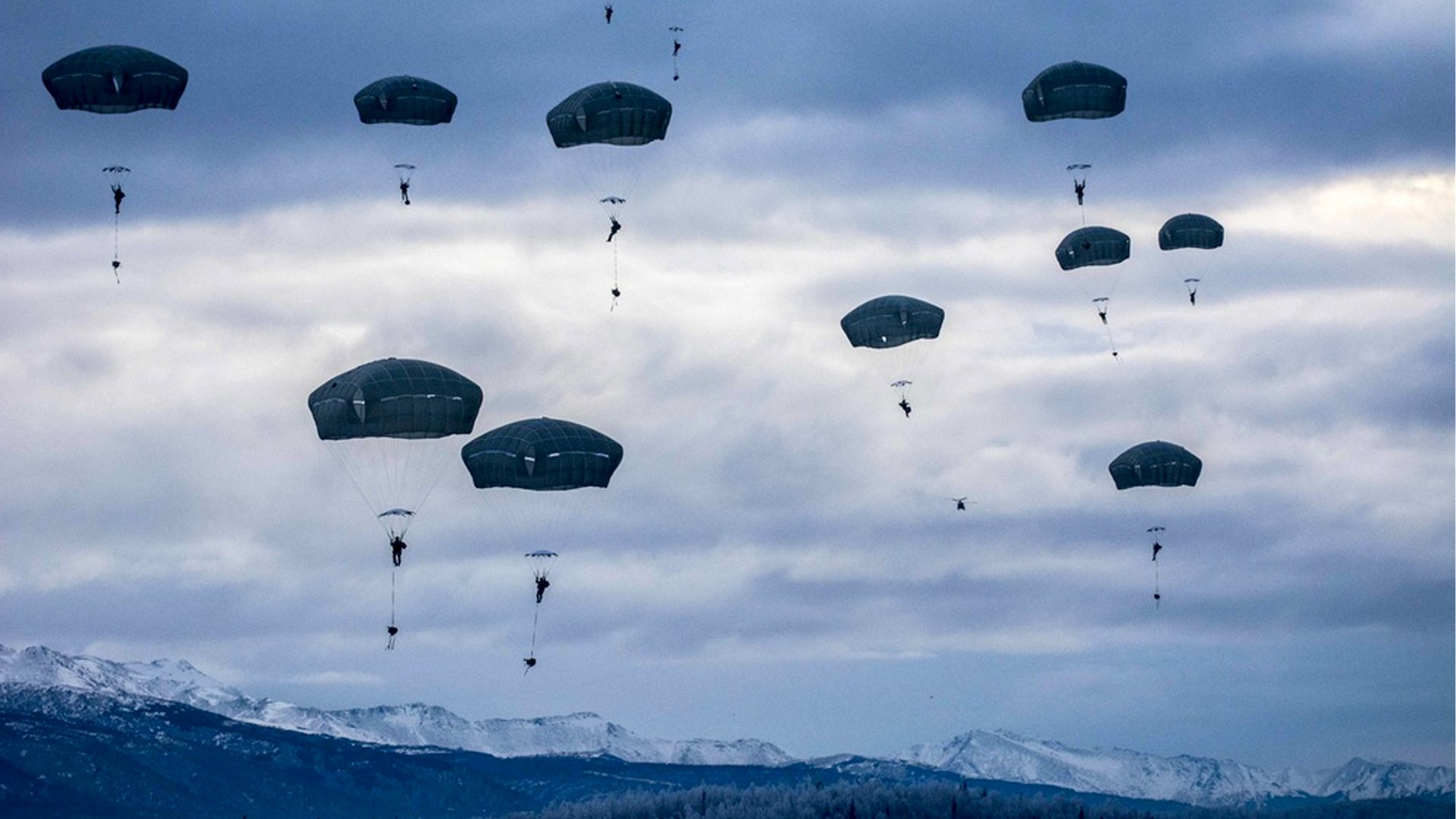
Paratroopers exit a US Army CH-47 Chinook at Joint Base Elmendorf-Richardson, Alaska, Dec. 3, 2015. US Army photo by Staff Sgt. Daniel Love.
During the award ceremony, Chapoton said he was humbled by the medal but insisted he was simply doing what any of Alaska’s paratroopers in the newly commissioned 11th Airborne Division — soldiers dubbed “Arctic Angels” — would have done.
Chapoton and the rest of the 11th Airborne are currently tasked with Arctic dominance, with soldiers trained to thrive in frigid environments. The US Army reactivated the division on June 6, 2022, combining several previously existing units that had fallen under the Army Alaska command. While the current division is still in its infancy, the unit can trace its lineage back to World War II.
Related: DISPATCH: 82nd Airborne Paratroopers Doing What They Do Best
A Gory Road to Glory
The 11th Airborne was activated at Camp Mackall, North Carolina, just outside Fort Bragg, on Feb. 25, 1943. Sometimes referred to as “the Pacific’s Band of Brothers,” the division served in the Pacific theater during WWII. The 11th Airborne underwent jump training and advanced jungle warfare training in New Guinea before deploying to the Philippine Islands in November of 1944. The paratroopers landed at Leyte Beach and fought for three months in intense combat across mountainous terrain.
The campaign produced a slew of individual awards for bravery.

A soldier assigned to 10th Special Forces Group (Airborne) fires at a distant target during cold-weather training in Taylor Park, Colorado, March 7, 2016. US Army photo by Sgt. Timmothy Clegg.
During the Battle of Leyte, 31-year-old Pvt. Elmer E. Fryar encountered an entrenched enemy position supported by mortars and automatic weapons. Members of Company E, 511th Parachute Infantry Regiment, 11th Airborne Division, could not seize the position and were ordered to retreat. But Fryar spotted an enemy platoon attempting to outflank his company and moved to higher ground for a better firing position.
Wounded in the ensuing firefight, he was credited with killing 27 enemy soldiers and helping two wounded comrades to safety. While doing so, he leapt in front of his platoon leader when he saw an enemy sniper aiming for the man, taking the fatal shot himself.
With his remaining strength, he took out the sniper with a hand grenade before dying.
Fryar was posthumously awarded the Medal of Honor.
The 11th Airborne saw action again in Luzon, where it conducted the final American parachute assault of the war. During the fighting, Pfc. Manuel Perez Jr. became the second soldier from the division to be awarded the Medal of Honor. On Feb. 13, 1945, Perez helped destroy 11 Japanese pillboxes and killed 18 enemy soldiers — three with the butt of his rifle and one with his bayonet. Perez was killed in action one month later.
The 11th Airborne Division later escorted Gen. Douglas MacArthur during the American occupation of Japan and was relieved in 1949. Part of the division later fought in the Korean War, again conducting the final parachute assault of the war.
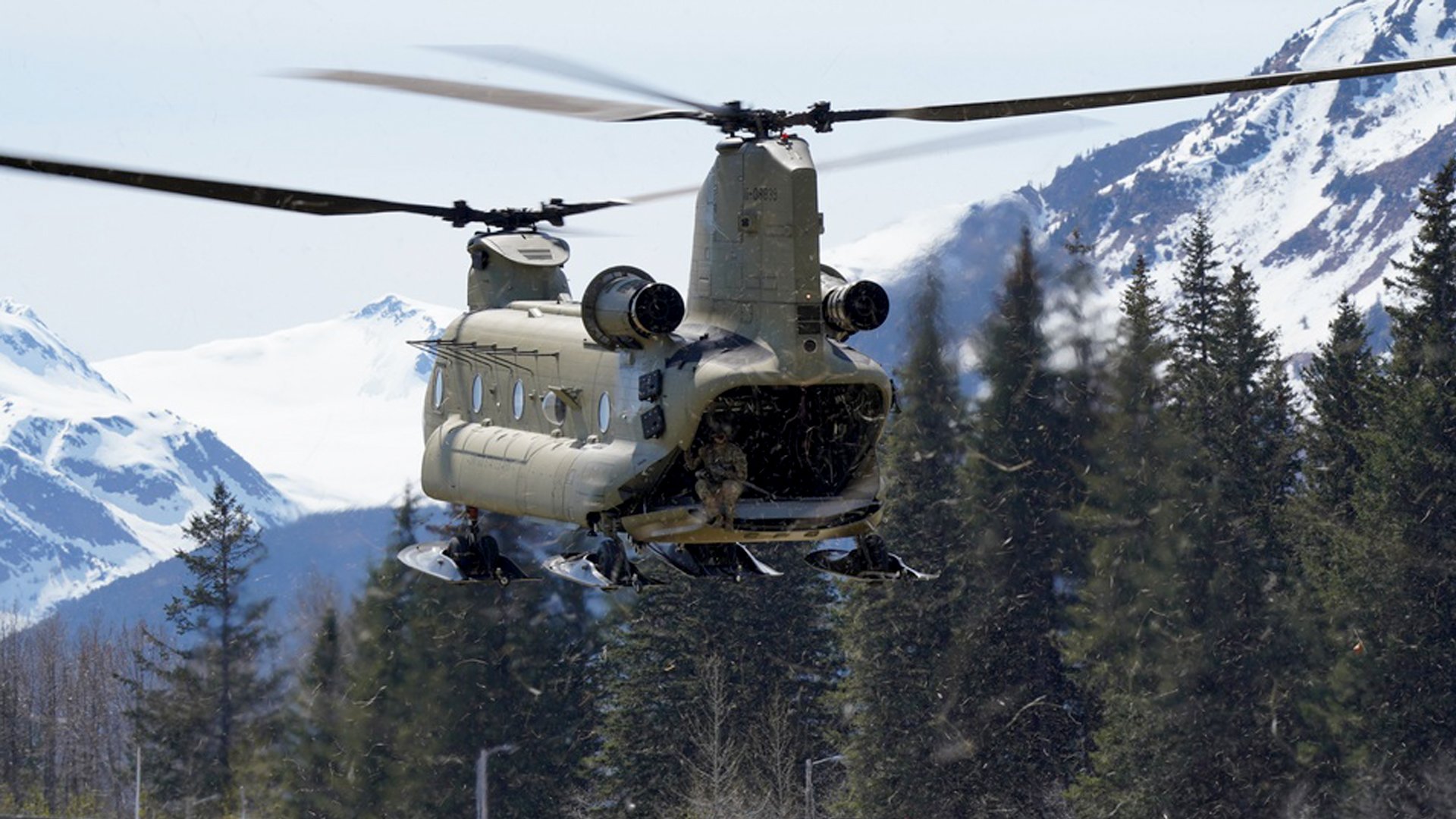
A CH-47 Chinook helicopter from 1st Battalion, 207th Aviation Regiment, Alaska Army National Guard, prepares to land in the city of Seward, Alaska, May 18, 2021, in support of Exercise Orca 21. US Army National Guard photo by Dana Rosso.
The 11th Airborne Division was officially deactivated in 1965.
“The 11th has a great history and heritage,” Army Chief of Staff Gen. James McConville said when the Army announced the division’s reinstation in May. “That means a lot to soldiers and tabs on their badges — things like that matter. But, also, we’re looking at the Arctic very differently. [...] You’re the ones that can operate with the right equipment and even transform some of those units so they have the right vehicles to operate in the coldest time.”
Related: Team of 101st Airborne Soldiers Claims ‘Best Squad’ Competition
Two Attacks, One Division
The Arctic Angels form the Army’s first division-sized unit focused entirely on the Arctic and cold-weather combat. It is also the only division that splits its soldiers between parachute and air assault specialties.
The Army’s other two airborne divisions, the 82nd and 101st, are not region-specific and concentrate on one tactic. The 82nd remains focused on parachute operations, while the 101st remains primarily focused on air assault tactics.
In June, two existing brigade combat teams were absorbed to form the 11th Airborne. The 1st Stryker Brigade Combat Team was redesignated as the 1st Infantry Brigade Combat Team. With the new designation, the unit is replacing its Strykers with helicopters to focus on air assault operations.
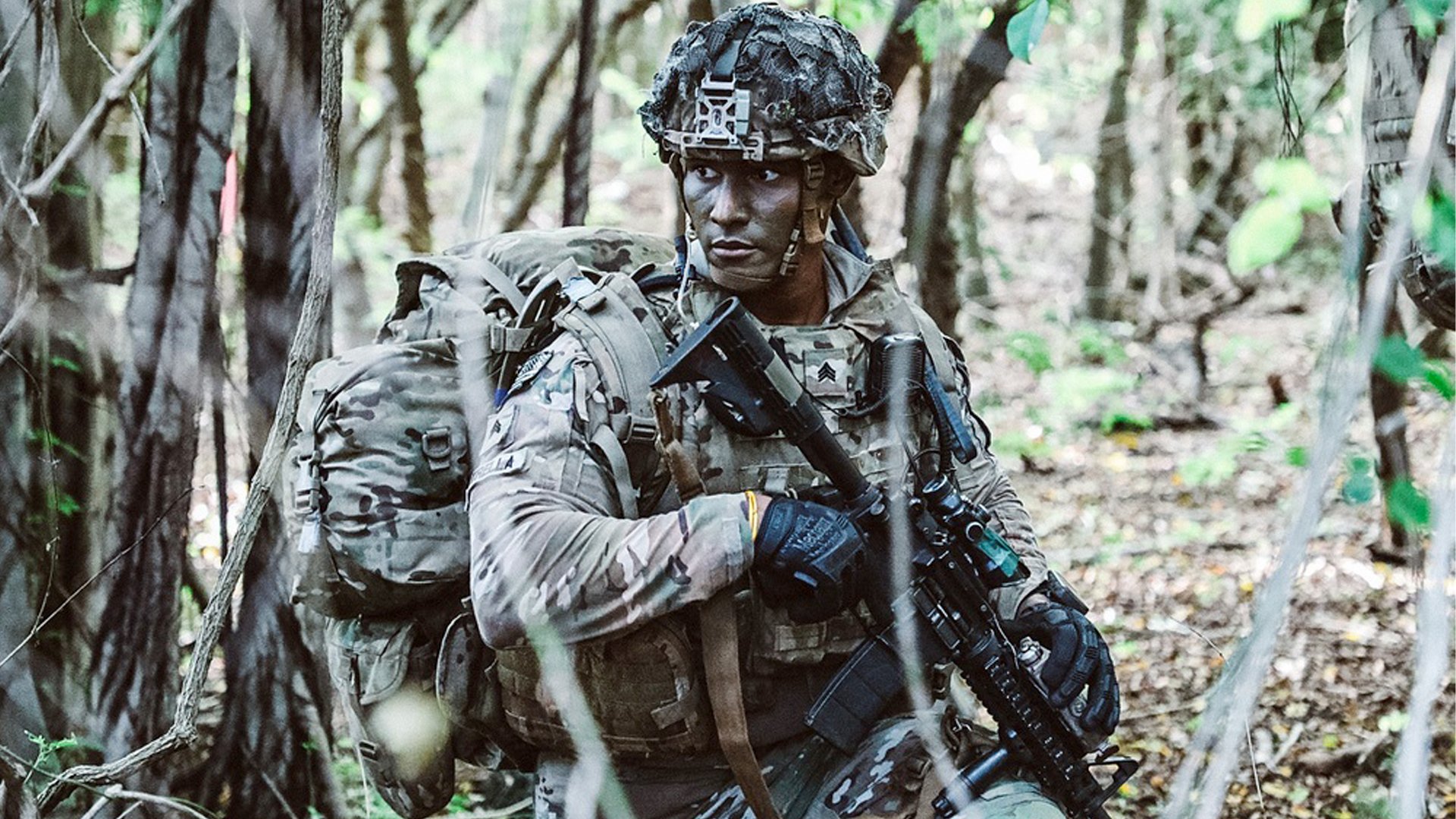
Soldiers from Charlie Company “Coldsteel,” 1st Battalion, 27th Infantry Regiment, 2nd Infantry Brigade Combat Team, 25th Infantry Division, conduct air assault operations in Hawaii, Jan. 27, 2020. US Army photo by Sgt. Sarah D. Sangster.
The 4th Infantry Brigade Combat Team (Airborne) was simultaneously redesignated as the 2nd Infantry Brigade Combat Team and will remain focused on parachute operations.
Maj. Gen. Brian Eifler, the division’s commanding general, said his troops train on a different schedule from the rest of the Army and would be studying and even visiting other militaries in some of the coldest countries on earth.
“If you’ve been in 30 below or colder weather, it’s a life-changing experience,” Eifler said. “We train for that on a regular basis and operate in it. It takes a different type of soldier and takes unique equipment. And that’s what we’re developing up there in Alaska.”
In November, members of the 11th deployed to India’s Himalayas — a geopolitical flashpoint with China — to take part in the Yudh Abhyas 22 training exercise alongside Indian soldiers. The soldiers trained to operate in high-altitude environments where they must consider additional threats like sun blindness, oxygen deprivation, and extreme cold.

Paratroopers secure the static line to their parachutes before jumping out of a C-17 Globemaster III during Arctic Pegasus, May 1, 2014. US Air Force photo by Staff Sgt. Zachary Wolf.
The newfound sense of purpose and shared identity for the 11th Airborne may be contributing to higher morale and better overall mental health of its soldiers. According to the division’s spokesperson, John Pennell, US Army suicides in Alaska have dropped by more than half in the last year. The 11th Airborne instituted a new program it’s calling Mission 100, which ensures every soldier in the unit has access to counseling. In addition, members of the unit are now eligible for additional pay whenever they are required to work in cold weather. This “Arctic pay” could increase soldiers’ monthly pay by hundreds of dollars.
As Russia’s war in Ukraine nears the one-year mark and tensions with China continue to escalate, the 11th Airborne is ensuring it remains ready to deploy and win in any cold-weather environment.
Like the division’s song says, “It’s a gory road to glory, but we’re ready.”
Read Next: Death From Above: Everything To Know About the 82nd Airborne Division
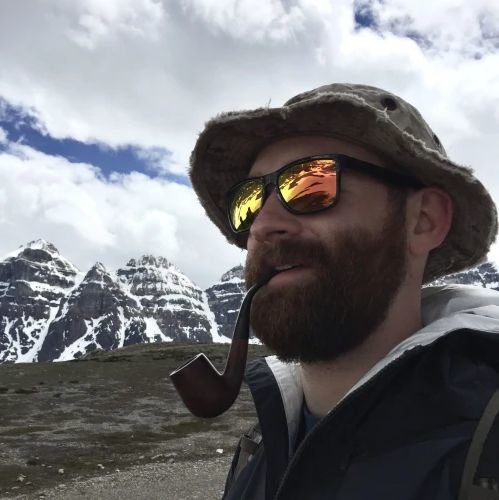
Mac Caltrider is a senior staff writer for Coffee or Die Magazine. He served in the US Marine Corps and is a former police officer. Caltrider earned his bachelor’s degree in history and now reads anything he can get his hands on. He is also the creator of Pipes & Pages, a site intended to increase readership among enlisted troops. Caltrider spends most of his time reading, writing, and waging a one-man war against premature hair loss.

Matt Fratus is a history staff writer for Coffee or Die. He prides himself on uncovering the most fascinating tales of history by sharing them through any means of engaging storytelling. He writes for his micro-blog @LateNightHistory on Instagram, where he shares the story behind the image. He is also the host of the Late Night History podcast. When not writing about history, Matt enjoys volunteering for One More Wave and rooting for Boston sports teams.
BRCC and Bad Moon Print Press team up for an exclusive, limited-edition T-shirt design!
BRCC partners with Team Room Design for an exclusive T-shirt release!
Thirty Seconds Out has partnered with BRCC for an exclusive shirt design invoking the God of Winter.
Lucas O'Hara of Grizzly Forge has teamed up with BRCC for a badass, exclusive Shirt Club T-shirt design featuring his most popular knife and tiomahawk.
Coffee or Die sits down with one of the graphic designers behind Black Rifle Coffee's signature look and vibe.
Biden will award the Medal of Honor to a Vietnam War Army helicopter pilot who risked his life to save a reconnaissance team from almost certain death.
Ever wonder how much Jack Mandaville would f*ck sh*t up if he went back in time? The American Revolution didn't even see him coming.
A nearly 200-year-old West Point time capsule that at first appeared to yield little more than dust contains hidden treasure, the US Military Academy said.












